Corfe Castle rises from a tall hill in Dorset, its ruined towers and winding stone walls whispering stories from over a thousand years ago.
When I arrived, the castle just seemed to float above the countryside, surrounded by sweeping views and the peaceful village below.
I wandered through crumbling arches and tucked-away corners, feeling the weight of history in every footstep.
Corfe Castle isn’t just an old ruin—it’s a place where the past feels startlingly close.
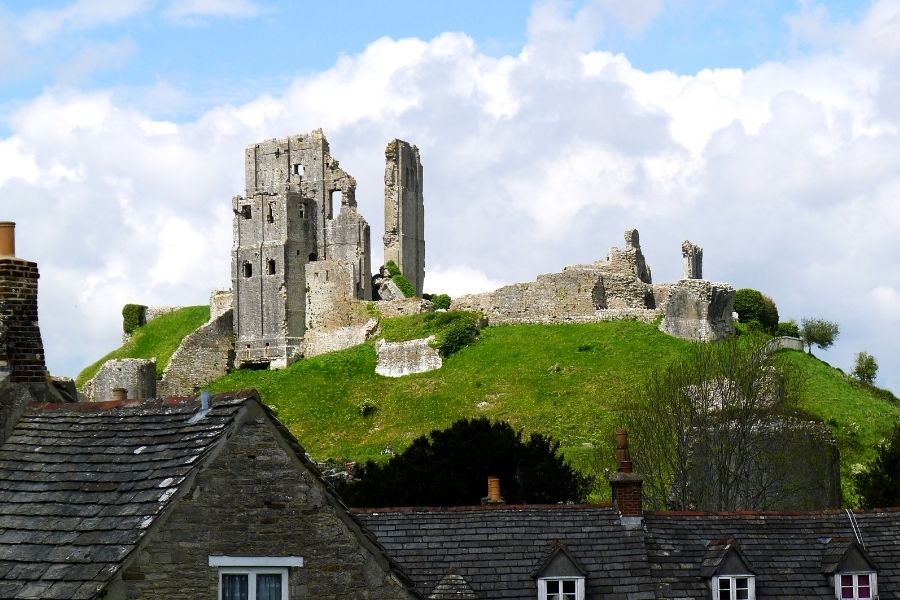
I just had to share what I found there, both the sights and those hard-to-describe feelings, with anyone who loves a bit of history or a beautiful spot.
Corfe Castle’s Dramatic History
Corfe Castle practically drips with tales of conquest, power, and tragedy.
Each stone in this ancient fortress holds stories of kings, battles, and the shifting tides that shaped Dorset—and honestly, all of England.
Origins and Construction
Corfe Castle perches on a steep hill in the Purbeck Hills.
People probably used this spot for defense long before the Normans showed up.
From the top, you get a sweeping view of the village and countryside—perfect for spotting any trouble on the horizon.
They started building the stone castle after 1066, right after William the Conqueror took England.
The Norman builders picked their spot carefully—the “corfe,” or gap in the hills, made it easy to defend.
Most castles back then were wooden, but Corfe Castle was stone from the start.
That made it a fortress built to last.
Thick walls, a tall keep, and multiple gatehouses gave it serious staying power.
Walking among the ruins, I noticed the clever medieval engineering in every battered wall and broken tower.
Each stone felt like it was holding onto a secret from long ago.
Norman Conquest and Royal Ties
After the Norman Conquest, Corfe Castle turned into a royal fortress.
William the Conqueror wanted it to protect his power and help him control the region.
Kings like Henry I spent time here.
Corfe Castle also doubled as a prison for important captives.
Hidden passageways and murder holes make its defensive purpose pretty clear.
Its location let it oversee trade routes and guard England’s southern coast.
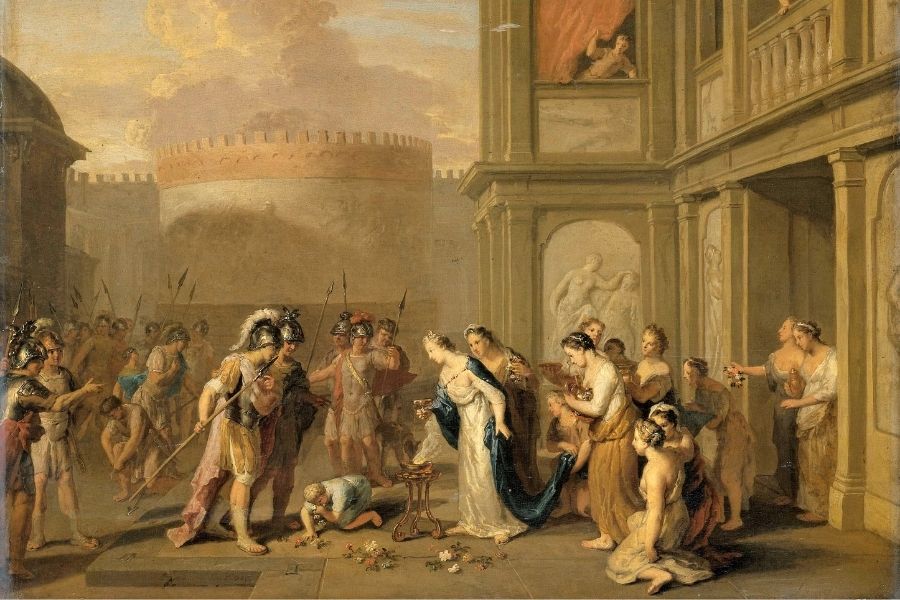
Royal connections brought both prestige and plenty of headaches.
The castle became a hotspot for rebellion and civil war, and you can still see scars from battles on the ruins.
Table: Notable Royal Connections
| King | Role at Corfe Castle |
|---|---|
| William the Conqueror | Founder and builder |
| Henry I | Stayed and ruled from here |
| King John | Used as prison and vault |
Tales of Kings and Martyrs
Corfe Castle is probably most famous for the murder of King Edward the Martyr in 978.
Edward died here, likely thanks to court intrigue, which turned the site into a place of royal tragedy even before the stone walls existed.
Edward’s death put Corfe on the map.
Over time, the legend of his murder grew, coloring how people remembered the castle.
Walking past the battered stones, I couldn’t help but picture those dramatic moments playing out.
Over the centuries, the castle saw sieges, betrayals, and plenty of drama.
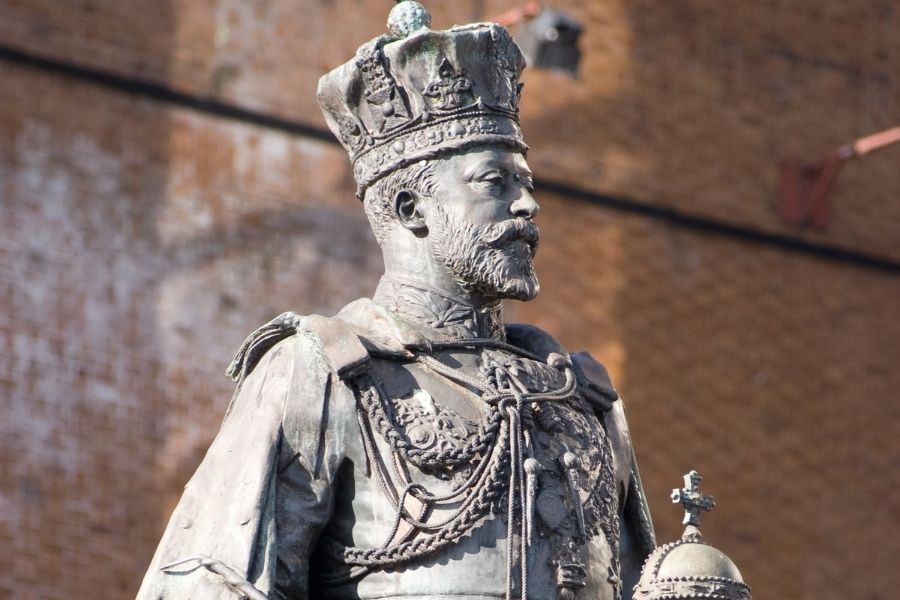
Its haunted reputation comes not just from its ruins, but from the blood and heartbreak of its royal residents.
The English Civil War and Corfe Castle’s Fall
Corfe Castle became a battleground during the English Civil War.
As I explored the ruins, stories of the Bankes family, sieges, and destruction seemed to echo off every stone.
The Bankes Family and Lady Mary Bankes
The Bankes family owned Corfe Castle in the 1640s.
Sir John Bankes supported King Charles I, turning the castle into a key Royalist stronghold.
After Sir John died, Lady Mary Bankes took charge.
She’s remembered for her guts and determination.
With just a handful of defenders, she managed to hold off much larger Parliamentarian forces.
Lady Mary became a symbol of courage.
She kept supplies moving, spirits up, and the defense organized.
Her story still stands out as one of the most inspiring from the Civil War.

Notable Facts:
- Lady Mary Bankes held off two major sieges.
- Corfe Castle sheltered Royalist soldiers and their families.
- Lady Mary’s defense is a highlight in local history.
Siege by Parliamentarian Forces
During the Civil War, Parliamentarian soldiers set their sights on Corfe Castle because of its Royalist ties.
They gathered hundreds of men to attack, hoping to break Royalist resistance in Dorset.
The first big siege hit in 1643.
Lady Mary and her small force held out, despite being outnumbered.
Thick walls and clever defenses made all the difference.
The second siege in 1645 was tougher.
Someone betrayed the defenders from inside, letting Parliamentarian troops slip in.
That was the end—Corfe Castle finally fell.
Main Events:
| Year | Event |
|---|---|
| 1643 | First siege repelled by Lady Mary |
| 1645 | Second siege leads to castle’s surrender |
Destruction and Ruined State
After they captured Corfe Castle, Parliamentarian troops wasted no time destroying key structures.
Their orders were simple: make the castle useless as a fortress.
They packed gunpowder under the walls, towers, and gatehouses, and blew them apart.
The destruction left Corfe Castle in ruins.
Locals scavenged stones to rebuild homes in the village.
Today, jagged remains stand as a symbol of conflict.

Walking through broken arches and crumbling rooms, I could almost feel the echoes of those violent days.
The ruins are a stark reminder of how the Civil War changed not just the castle, but all of Dorset.
Exploring the Majestic Ruins Today
Standing on the castle hill, I got up close and personal with centuries of history.
My visit revealed more than just stone walls and sweeping views—there were stories of daily life, surprising archaeological finds, hands-on exhibits, and even a few ghost tales.
Castle Grounds and Inner Bailey
Corfe Castle’s ruins shoot up above the village, offering jaw-dropping views of Dorset’s countryside.
I entered through the old gatehouse and wandered winding paths to the heart of the castle, the inner bailey.
Inside, I found fallen towers, arched passageways, and fragments of thick stone walls.
The decay is dramatic, but the remaining stonework hints at just how massive and defended this place once was.
The grounds are open for walking and exploring.
I watched families picnic on the grass and kids clamber over old foundations.
Signs along the walls help you imagine what once stood there—the great hall, chapel, kitchens—all now just memories in stone.
Archaeological Finds and Medieval Life
As I explored, I stumbled upon displays of archaeological finds from recent digs.
Pottery shards, broken swords, and old coins told stories of the people who once called this place home.
Simple wooden benches let me pause and check out replicas of ancient weapons, utensils, and armor.
Panels explained how archaeologists piece together these clues to learn about medieval life at Corfe.
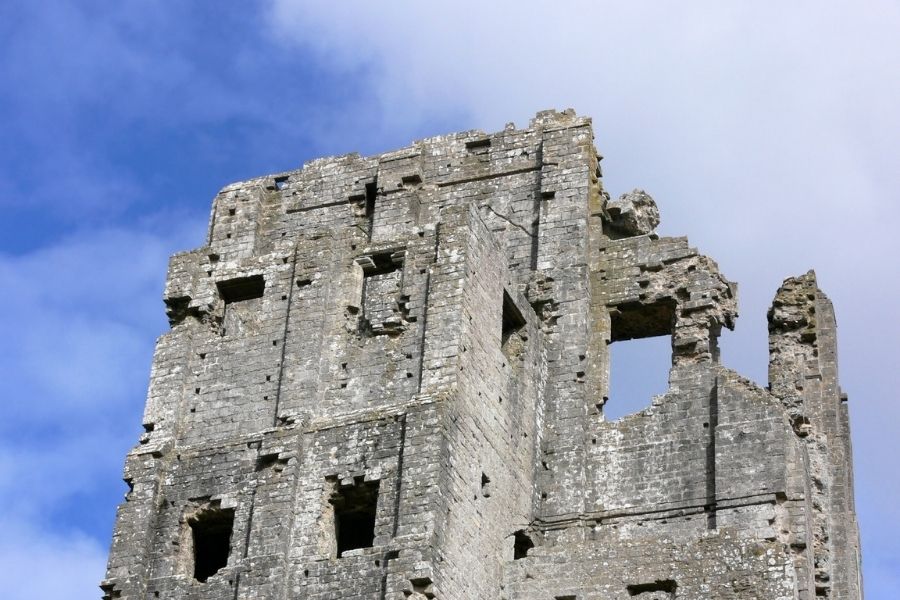
Artifacts found on site:
| Type | Purpose |
|---|---|
| Pottery fragments | Cooking, storage |
| Arrowheads | Defense, hunting |
| Coins | Trade, wages |
| Utensils | Eating, food preparation |
Kids (and adults, honestly) can touch some of the models.
This hands-on approach made the Middle Ages feel a bit more real.
Interactive Exhibits and Guided Tours
I joined a guided tour that really brought the castle’s military history and Civil War destruction to life.
The guide pointed out massive gaps in the walls, telling stories of epic sieges and final destruction.
Audio guides sit near the entrance, and I noticed plenty of visitors using them.
They’re handy if you want to explore at your own pace and dive deeper into specific ruins.
Interactive exhibits near the entrance and in sheltered spots kept things lively.
I spun a timeline wheel, opened cabinets full of replica artifacts, and took a quick quiz about medieval life.
Great for families or anyone who likes a bit of hands-on learning, rain or shine.
Ghost Stories and Romantic Ruin
As the evening sun threw long shadows across the broken towers, it was easy to see why Corfe Castle is famous for ghost stories.
Some people swear they’ve seen a headless woman wandering the ruins—a betrayed noblewoman, so the legend goes.
There’s a real sense of romantic ruin here.
Ivy crawls up the walls, and the views stretch out over green hills and rooftops.
No wonder poets and painters have flocked here for centuries.
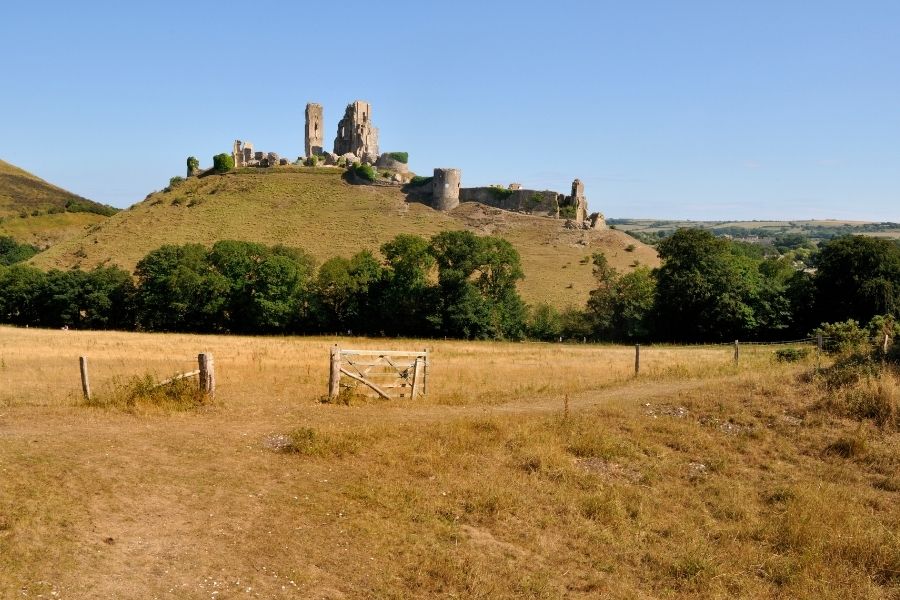
Local guides love to share tales of secret tunnels, lost treasures, and tragic endings.
These legends add another layer to the castle’s atmosphere, pulling you deeper into its mysterious past.
Corfe Castle Village and the Surrounding Dorset Countryside
Corfe Castle sits right in the heart of a village with deep roots, surrounded by the gorgeous Dorset countryside.
From classic stone cottages to sweeping hill views, the area bursts with rural English charm, history, and natural beauty.
Village of Corfe Castle and Dorset Traditions
Wandering through the village, I admired the old stone cottages and narrow lanes, all set against the dramatic backdrop of the ruined castle.
The main streets, East and West, meet in a small square near the castle entrance, which acts as the village’s hub.
Local traditions are alive and well here.
Seasonal fairs, local cheese, and handmade crafts remind you how closely the village culture ties to Dorset’s past.
The centuries-old parish church stands quietly, just a few steps from cozy tea rooms and quirky shops.
People here really care about their history and rural lifestyle.
Community boards overflowed with village events.
Whether I wanted a snack, a unique souvenir, or just to soak up the slow pace of Dorset life, the village delivered—all within a short, scenic stroll.
Purbeck Hills, Wareham, and Nearby Attractions
From the ruins, I gazed out over the rolling Purbeck Hills, part of the Isle of Purbeck.
These green slopes shape the local landscape, offering views of Poole Harbour and the English Channel.
It all feels pretty central, with Wareham to the north and Swanage to the south.
Wareham is a historic market town with Saxon earth walls and a riverside park, just a few miles away.
You can hop on a heritage steam train through the countryside to reach Swanage—a hit with families and anyone who loves a bit of old-fashioned travel.

Nearby, you’ll find museums, classic pubs, and scenic viewpoints.
I spotted plenty of signposted trails and picnic spots, making it easy to explore beyond the village and into the Dorset countryside.
Nature Walks and Jurassic Coast Views
Nature lovers will feel right at home.
Walking trails start in Corfe Castle and wind through wild heathland, ancient woodland, and up to panoramic lookouts.
These paths are well-marked and work for both short strolls and longer hikes.
The Jurassic Coast, a UNESCO World Heritage Site, sits just a short drive away.
Here, you’ll find dramatic cliffs, fossil-rich beaches, and endless sea views.
Some local walks lead to spots with breathtaking coastal views, blending history and wild beauty.
I often heard skylarks and spotted sheep grazing on the hills.
On clear days, the countryside and coastline just seem to go on forever, showing off the best of rural Dorset all around Corfe Castle.
Inspiration and Imagination: Corfe Castle in Popular Culture
Corfe Castle has sparked the imagination of writers and artists for generations.
Its haunting ruins still play a starring role in books and events that keep inspiring dreamers and history buffs alike.
Enid Blyton, the Famous Five, and Kirrin Island
Enid Blyton used to visit Dorset a lot, and honestly, it’s easy to see how the landscape crept into her stories. I’ve heard plenty of people say Corfe Castle sparked her idea for Kirrin Castle in the Famous Five books.
Blyton never actually confirmed it, but the resemblance between Corfe and her fictional Kirrin Island is almost uncanny. In those adventures, the Five search for hidden passages, chase after treasure, and get tangled up in mysteries at a ruined castle by the sea.
Walking around Corfe’s broken towers, I can’t help but imagine myself in one of those stories. The views are sweeping, and there are all these tucked-away corners and steep, winding paths that just ooze mystery.

Shops in Corfe Village still sell Blyton’s books and quirky souvenirs. That connection to the Famous Five keeps both the stories and the castle’s charm alive, and you’ll see families wandering about, hoping to step into the world Blyton dreamed up.
Literary Heritage and Medieval Reenactments
Corfe Castle isn’t just for children’s stories. Over the years, poets, painters, and novelists—like Thomas Hardy and J.M.W. Turner—have found inspiration here.
They captured the castle’s moody ruins, sometimes obsessing over its dramatic silhouette. Today, the castle is also famous for its medieval reenactments.
I once watched actors in full knight and villager getup bring centuries-old stories to life. They swing swords, cook over open fires, and invite visitors to try on armor or watch a bit of archery.
These lively gatherings make history feel almost touchable. The castle’s ties to literature and art, plus these bustling events, turn it into a place where history and imagination collide.
A Modern-Day Experience: Visiting Corfe Castle
Corfe Castle surprised me—it’s not just a historical relic, but a buzzing hub. The site feels carefully preserved, but it’s also packed with things to do, whether you’re into snapping photos or sampling local treats.
Getting there’s a breeze, whether you drive or hop on the steam train. Every corner of the village seems to hide something worth discovering.
National Trust and Preservation Efforts
The National Trust looks after Corfe Castle, and honestly, it shows. I spotted helpful signs everywhere and staff who genuinely seemed excited to share the castle’s story.
They use ticket sales to keep up restoration and repairs, making sure the ruins stick around for the next wave of visitors. When I bought my ticket, I found out a chunk of the fee goes straight into conservation.
There are regular events and tours that make the castle’s history feel accessible, even if you’re just there for a day. The Trust keeps things in check too—dogs on leads, no clambering up old walls.

Knowing my visit helped protect Corfe Castle made the whole experience feel a bit more meaningful.
Tourist Attractions and Cream Teas
After wandering through the castle, I found myself drawn into the village. There’s plenty to keep you busy—quirky shops, cozy tea rooms, and a general sense that you could spend hours just exploring.
I couldn’t resist stopping for a Dorset cream tea. The scones were warm, the clotted cream was thick, and the jam was local—washed down with a proper pot of tea.
If you’re looking for something different, the Corfe Castle Model Village and the local museum both give a glimpse into village life. Families seem to love roaming the Purbeck countryside or browsing handmade crafts in the shops.
Honestly, sitting down with a cream tea, ruins in sight, felt like the perfect way to soak in the place. There’s something about it—maybe the history, maybe just the view—that makes you want to linger just a bit longer.
Photography Tips and Steam Train Journeys
Corfe Castle practically begs you to snap photos from every angle. I grabbed my camera, wandered up the hill, and just soaked in those sweeping views of the ruins and the village below.
If you time it right—early mornings or late afternoons—the light gets softer, and you’ll dodge most of the crowds. That’s when the place feels almost magical, and your pictures just pop.
Then there’s the steam train. The Swanage Railway chugs right past the base of the castle, and hopping aboard felt like stepping back in time. Watching that old steam engine roll by with the castle in the background? It’s a photographer’s dream and honestly, it’s a moment I won’t forget.
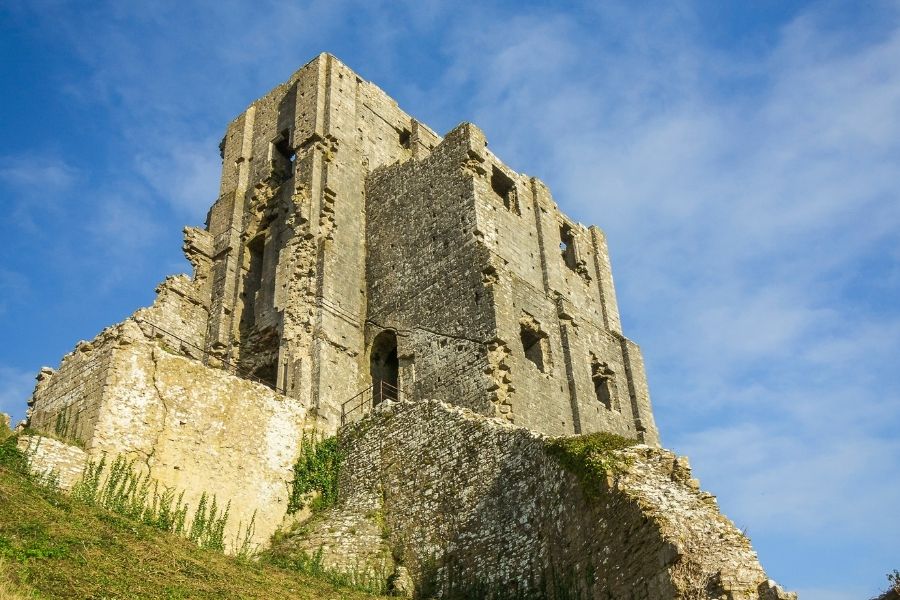
I’d say pack a zoom lens if you want to capture the details in the stonework, and maybe a wide lens for those big landscape shots. With the ruins, the quaint village, and that dramatic steam train, you’ll come away with some pretty unique photos—promise.

